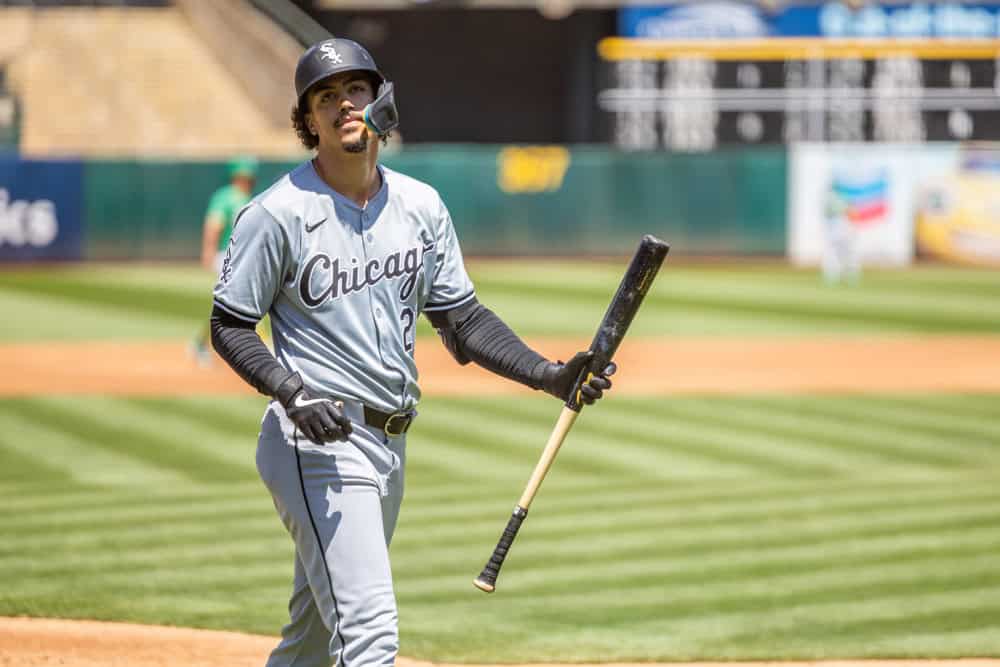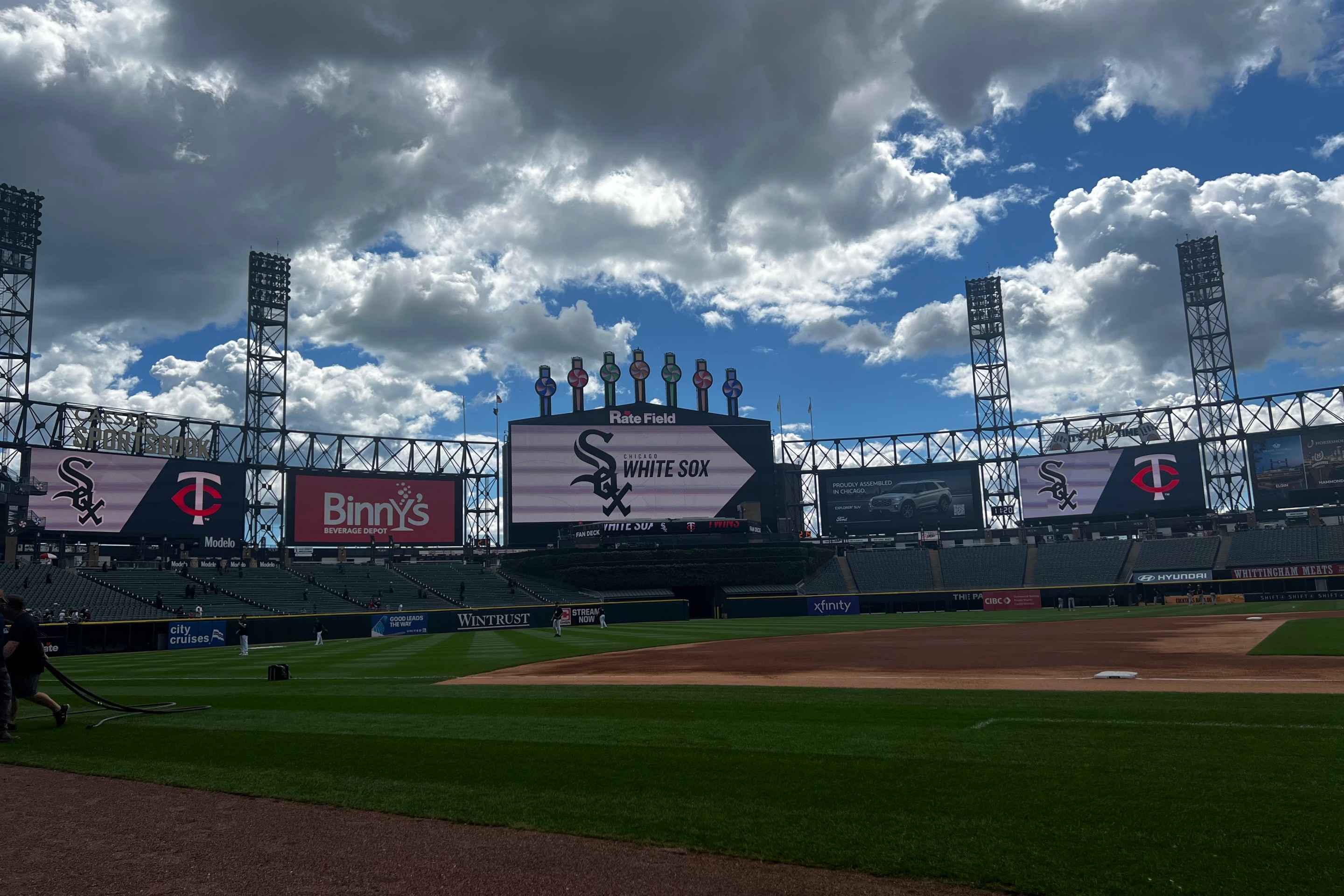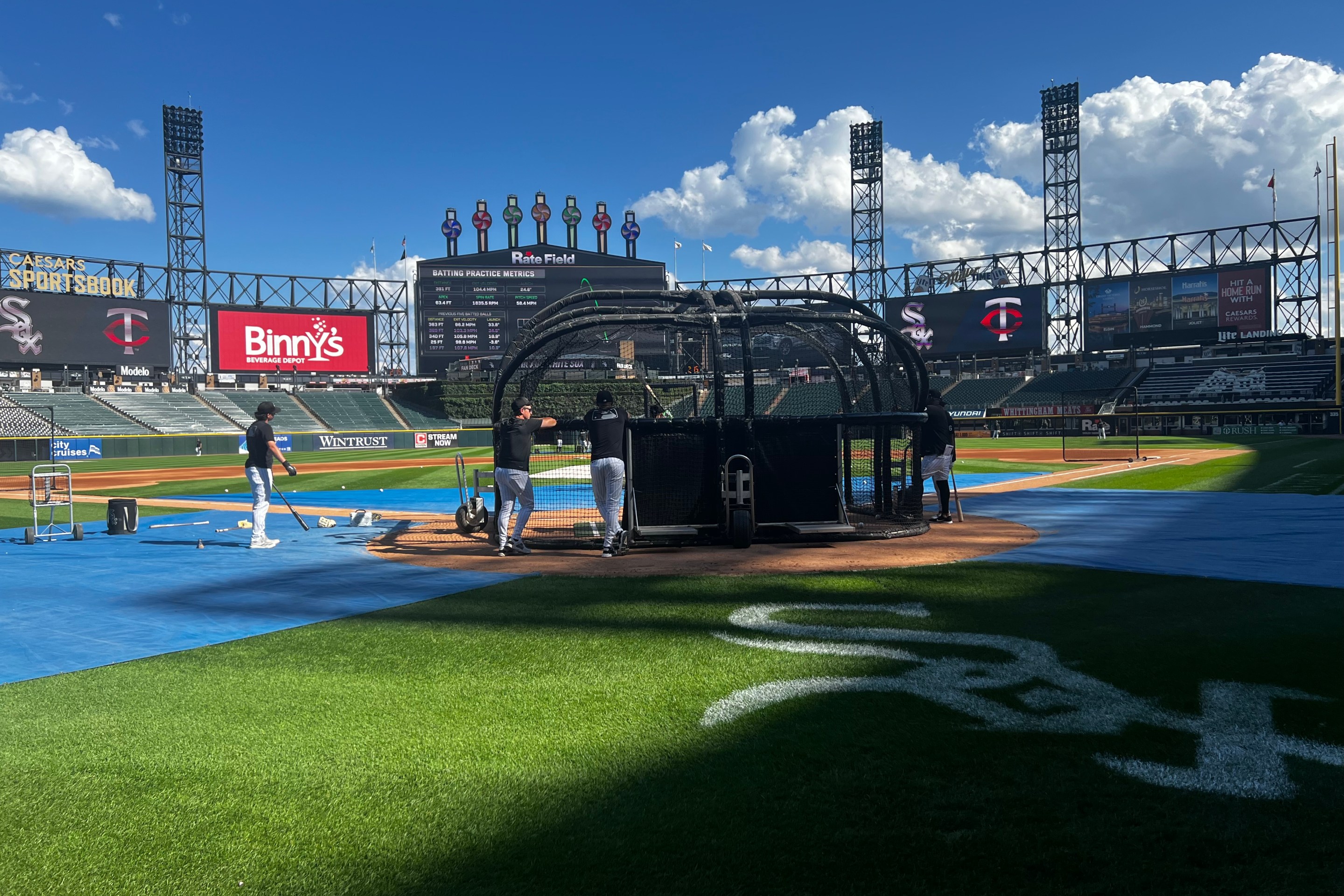Journalists are supposed to rely on facts rather than speculation. But the last eight years of White Sox baseball and the multiple cycles of relentless losing it has contained have made certain sights and sounds familiar.
So the moment feels well-understood when you see struggling young hitter like Miguel Vargas strike out, stride through the White Sox dugout quietly but purposefully before disappearing into the tunnel, followed by a series of loud bangs that reverberate through a mostly empty Guaranteed Rate Field, but only draw cursory glances from teammates who already understand.
In his brief White Sox career, shifting from a sporadically used role player on the annually competitive Dodgers, to the headliner of a trade to a club desperate for offense and desperate in general, Vargas is hitting a miserable .122/240/.195 in 25 games. And he's quite aware of it.
"He's a kid that really wears his emotions on his sleeve," said hitting coach Marcus Thames. "He wants to be good. But it's also time to take a step back and put too much pressure on yourself, so he can go out and have some fun. Be himself, be athletic."
"Obviously I wasn't playing that much in LA, so coming in here now I'm trying to be consistent with my prep work in the cage and the field," said Vargas. "It's the big leagues. The pitchers have better information, better stuff."
Vargas has been on the White Sox for barely over a month, and a turbulent one at that in terms of his career and the franchise's history, as they fired one of the people he was most familiar with in the organization (Mike Tosar was his signing scout with the Dodgers) a little over a week in. Since he was acquired under the premise of giving runway to a stalled former top-50 prospect, it's not a particularly significant chunk of time from the team's perspective for this project, and leads to a lot of talk of letting the 24-year-old Cuban get acquainted.
"Sometimes just takes time for him to get comfortable," said Chris Getz. "He’s learning us, we’re leaning him. I think that the biggest positive here is we’ve got this window of time for him to build these relationships and trust along the way. And we’ve got at-bats to give him."
"The clubhouse has been great, the coaches they take care of me and [that's] something I really appreciate," said Vargas. "I feel comfortable working with them and I feel that good things are going to happen."
Making Vargas comfortable in the majors is the only real route here. As much as Bryan Ramos' upturn in Triple-A lends a certain appeal to having them swap places, the nature of the impasse Vargas had reached with the Dodgers is that a demotion doesn't have much to offer his development. Not only is he a .297/.412/.512 career hitter at that level, he's made 996 plate appearances at Triple-A. Clipping quadruple digits there is an honor usually reserved for players who have become trapped from graduating.
"It happens a lot, man," said Thames of Vargas' troubles with the final step. "It's a huge gap from Triple-A to the big leagues. The pitchers are a little bit tougher here and it's all about being consistent, and you've got to keep working. He's had success down there. I took him in the video room the other day and I showed him when he was in A-ball, Double-A -- I showed him all his success. This is why the White Sox traded for you. You have some talent."
Asked straight up about it, and Vargas will make allusions to the Dodgers' vast player development resources, agree that they leveraged data to effectively improve his game, and that he's in a different environment now, albeit one he speaks of positively. No one can ignore the historic losing going on and the pall it casts over everything, but Vargas reveres Minnie Miñoso as much as any Cuban baseball player, grew up watching and admiring Alexei Ramírez on TV and clearly sees the purpose being on a rebuilding team has for the current state of his career. And one way to look at it is that even amid Vargas' horrific offensive struggles, is that the Dodgers already might have already accomplished the hard part of refining a hitting prospect.
Once a free-swinger, Vargas' chase rate has remained consistent since coming over from the Dodgers -- consistently excellent. Swinging at just 21.9 percent of pitches outside of the strike zone per Statcast, only Ramos and brand new Royals Robbie Grossman and Tommy Pham have chased less than Vargas' among White Sox hitters who have received playing time of any significance. Lenyn Sosa is pacing the club with a 39.3 percent chase rate, for comparison's sake.
But while those figures imply that the Sox Machine commenter who suggested an eye exam for Vargas might have missed the mark for explaining his poor performance against velocity, the others who have critiqued the hand load in his swing for excessive upward movement might have nailed it. Especially for this offense, Thames' job is half motivational speaking, half mechanics, and the old videos he showed to Vargas of himself were keyed to how he wasn't visibly reaching back for power in previous years.
"He's trying to reach back too much -- don't try to add," Thames said of Vargas, whose hands had been jutting upward on first move in his swing. "You can see it right away. He sees it, but we're trying to get that feel. We're doing some drills that he did when he was going well, just trying to get him to remember some drills that he's done, and some of the things myself and [Mike Gellinger] have done that we think can help him. But he's been working. The one thing I can say is he's been working."
"Trying to get back to what I’m used to and get the confidence back," Vargas said. "It’s been helping a lot. So try to trust what I’m working and go in the game and go and compete."
Rust from sporadic playing time with the Dodgers, pressure to produce with a new organization and the natural creep to bad habits that all hitters deal with from time to time are the cited reasons for why Vargas began loading up in his swing. But the extra motion has only exaggerated scouts' pre-existing concerns about his ability to punish same-handed velocity enough to carry a bat-first profile that lacks plus raw power. Statcast bat-tracking data similarly doesn't show Vargas as troublingly limited in bat speed, but slightly below-average enough that he needs to get by on great swing decisions (check) and feel for squaring up balls (unchecked so far).
Amid a White Sox offense this moribund, maybe a three-game hitting streak or posting a .321 on-base percentage over his last eight games represents a meaningful upturn. Even Vargas looking slightly less out of whack for a week lends a unique brand of at-bat to the Sox lineup, where an 0-2 count will extend past the two obvious chase pitches out of the zone that follow. He already leads all Sox hitters with more than 90 plate appearances for seeing the most pitches on average.
But since Vargas is pretty far from looking actually good yet, we're reduced to the scouting methodology of hoping to see the things he needs to do occasionally, to know that it's in there. So knowing that he's been trying to shorten his move to better time up elite fastballs make him turning on 97 mph feel like a revelation.
"It feels great," Vargas said of his hand load afterward. "I’ve been feeling better these couple of games. Just trust in what I’ve been doing and what I work with."
The White Sox haven't earned any trust. But the organizational lethargy that has led to a historically awful season can't be assumed to be extended indefinitely to struggling individual players, and Vargas has the specter of Ramos, possibly Colson Montgomery, or even the two other players he was acquired with in Alexander Albertus and Jeral Perez to contend with for opportunities in the Sox infield. The leg up he was supposed to have on everyone was being major league ready, and he's been burning through his head start with extreme prejudice for a month and counting.
But if swing decisions and sweat equity are all that Vargas' turnaround requires, the Sox feels there's enough here that's worth giving at-bats to in an otherwise worthless season.
"The results haven't come yet but I think over the long haul it's going to happen for him," Thames said. "I think it's going to come, because he cares."





